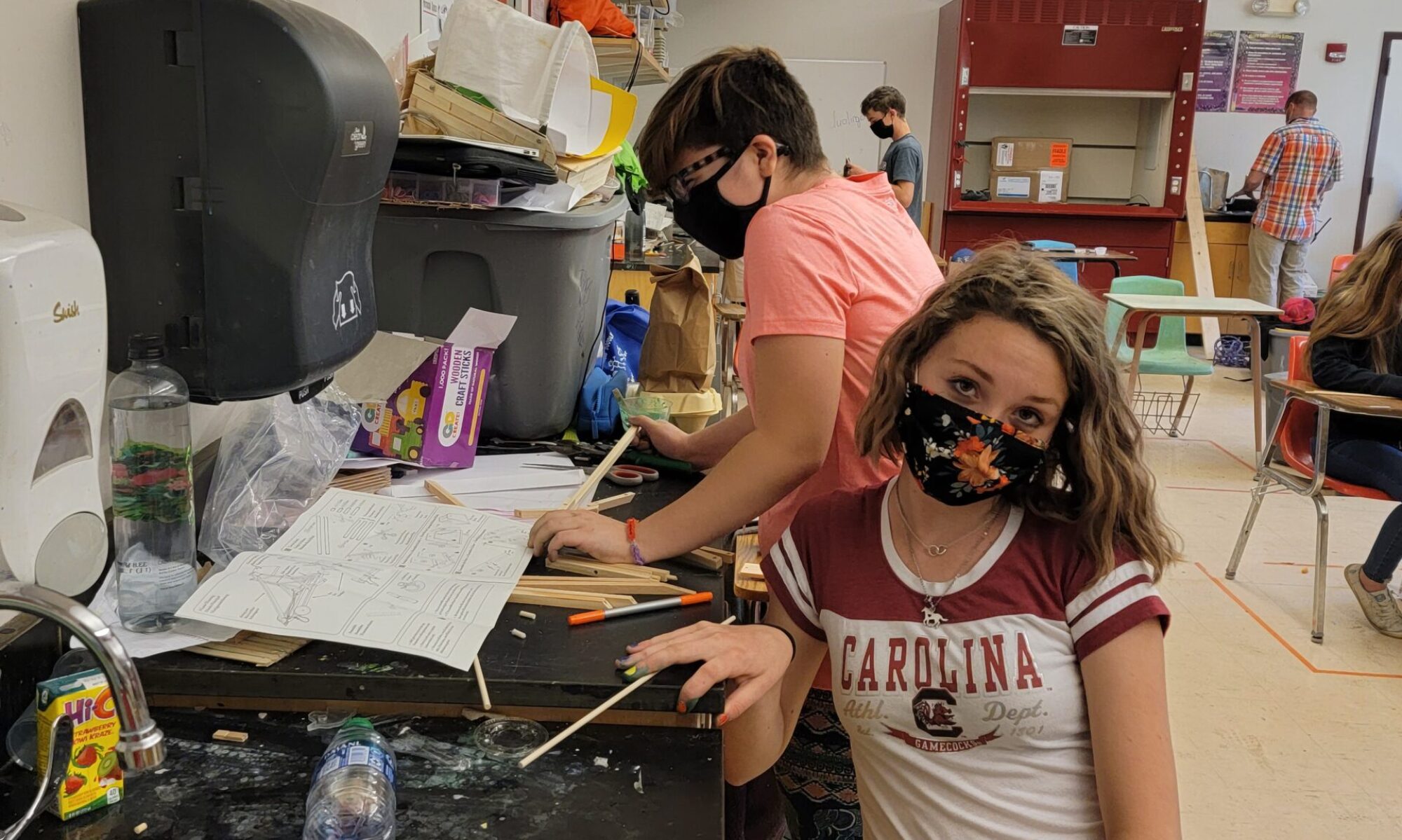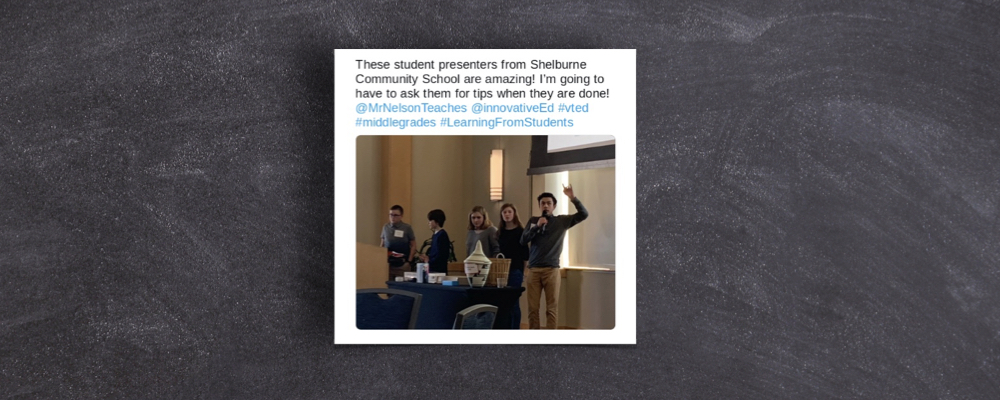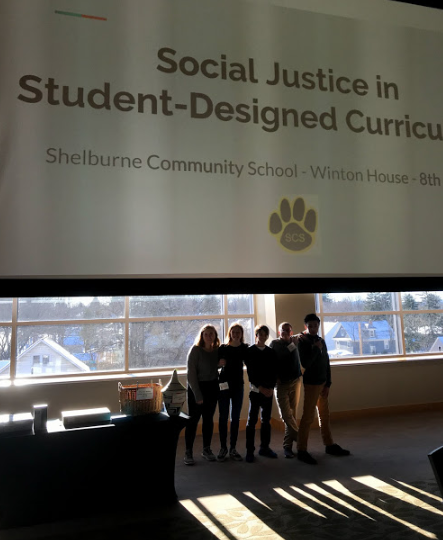
What’s the plan?
Here’s a quick reminder of my focus question for this year’s Learning Lab:
How can social justice be a lens for personalized, student-designed curriculum?
Here’s how — at this moment anyway — I would adjust the wording of my focus question:
How can students use social justice as a lens for designing curriculum?
This is nit-picky, but having the word “personalized” is redundant in this context. Anyone who’s worked with students to design curriculum knows that there are myriad layers of personalization when it’s students who are steering the ship.
Not-shockingly, students working at the curriculum design table use their own experience and perspective to develop activities and outcomes that lean into creativity, flexibility, and exploration. You know, the things represented by this idea of teachers providing student voice and choice in learning. They want want to build, dig into projects, and work toward complicated solutions, rather than monochromatic, binary finish lines.
And it makes things so darn fun for everyone involved.
It took some time to find an on-ramp for bringing social justice to the design table with students. I’d broached the subject a few times early in the year, but we collectively decided that looking at issues within our community (that of Shelburne, or Vermont in general) seemed like a great time to get started with using social justice as our lens. This brought us to the unit we’re currently wrapping up, the one I’ve very generically been referring to as our “Community” unit.
Here’s a broad overview:
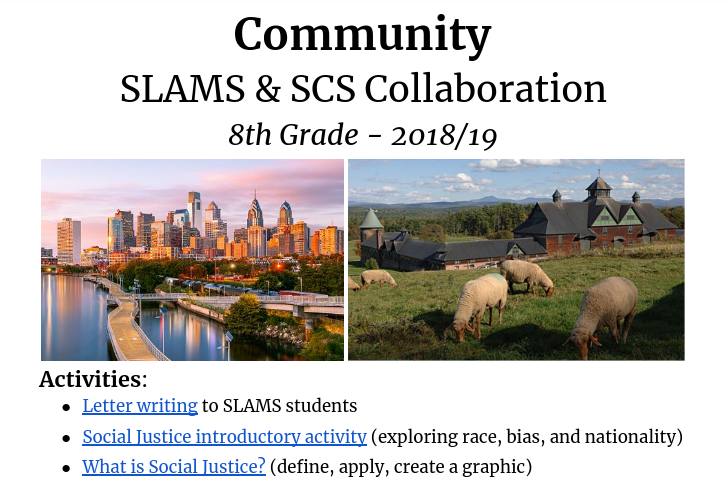
Our original goal was to engage 8th grade students by digging into issues within our community connected to social justice. While doing so, we’ve been simultaneously working to connect and collaborate with the Science Leadership Academy Middle School (SLAMS), a pilot school in inner-city Philadelphia. After meeting the entire faculty at this past June’s Middle Grades Institute, a connection with one of their teachers, Hilary Hamilton, sparked an idea. First, have our students explore issues within their respective communities. From there, connect our students with a goal for them to determine what defines both the similarities and differences of our communities.
Cool stuff. And we’re off and running.
Not only that, but it was a crew of 8th grade student leaders — all of them members our twice-weekly student planning committee (SPC) — that just brought the house down at the Middle Grades Conference on Saturday, January 12th. Included is the Slides presentation that they used (yes “they”; I would estimate that in our 25 minute presentation I probably spoke for about six minutes total), as well as some Twitter hype from the day.
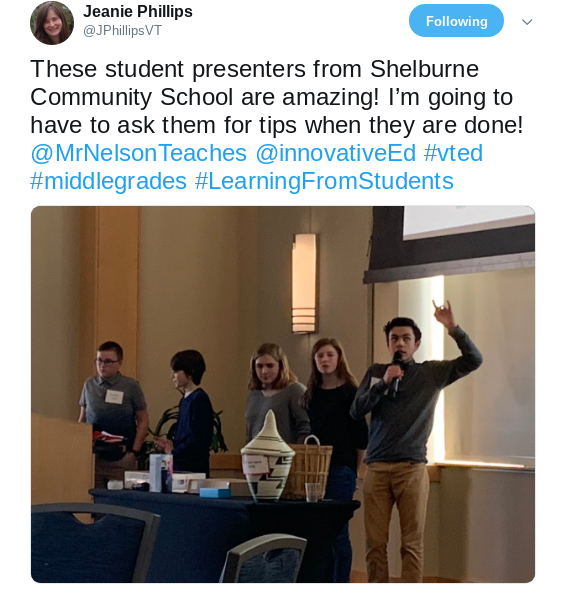
What are the bright spots?
The biggest thing I’ve been really happy about is the fact that our work regarding social justice — something that is of course relevant but can also be uncomfortable and is far-too-often underrepresented in curriculum — has felt meaningful to students.
I think this is largely due to the amount of choice and freedom to explore issues we’ve provided. But one of my biggest worries going into this year was that any content connected to social justice (in particular, topics centered on injustices or inequalities regarding race, gender, sexuality, etc.) would feel “preachy”, handed-down, or like a teacher mandate. Per student feedback, it hasn’t. Awesome.
Using the concept of intersectionality has been really helpful.
It builds on the work, and allows for a second year, of a former student — Heidi — to come into the classroom and teach. This also paired beautifully with students using “social identifiers/identities” and breaking down what they mean, whether they’re “fixed or fluid”, and which lead to privilege, discrimination or both.
To wrap this up, students then applied each of the social identifiers to their own lives.
Difficult work, and sometimes with unexpected results. A great example: most middle level students have little to no clue what their socioeconomic status would be considered. This leads to really interesting conversations about their role as household dependents while moving closer and closer toward independent adulthood. Love it.
Another fun and originally unplanned activity involved a movie.
After using a short clip from the film Crazy Rich Asians as a conversation-starter for social identities, students were really interested in watching the rest of the movie. We ended up doing so, but with a bonus task. Students were challenged to use “Social Identifiers Bingo” to match when particular social identifiers showed up in the film. It was a small, but engaging activity that, I think, ultimately enriched the viewing experience. It’s also a really funny and largely poignant movie. Well worth a watch.
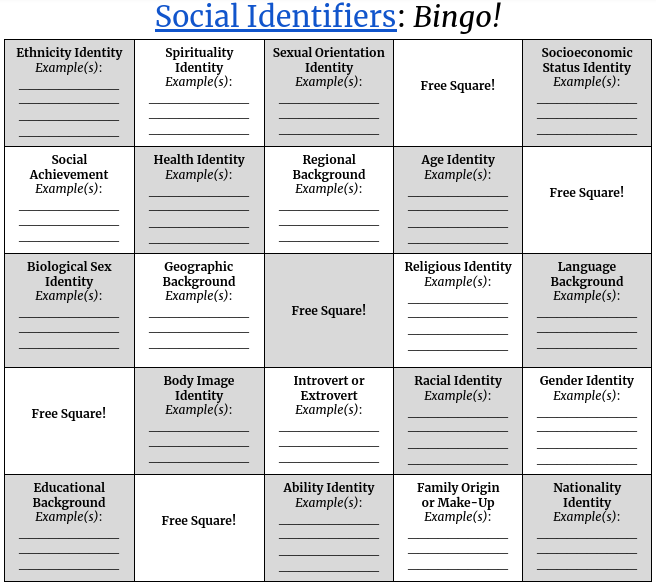
Finally, I’m really excited about the project that students are currently engaged in. Using the Design-Thinking framework as a “playlist”, each student group (formed by students filling out an inventory on social identifiers they’re interested in pursuing), students are working on tangible products.
These products must work as a response to a driving question that, in the “Define” stage of Design-Thinking, students crafted to capture an issue within our community. The learning has been project-driven and hands-on. For the past two weeks I’ve done very little “teaching”, but have instead been roving between groups working to put out fires while asking questions to spark creative thinking or problem solving.
So fun. My favorite type of work as an educator.
What are the belly flops?
I like wrapping up this blog post with a focus on the not-so-great. I recently had the chance to read Daniel Coyle’s The Culture Code(shout-out to Bill Rich and Jeanie Phillips for their deep discussion via podcast on the book). In it, one section centers on the nearly incomprehensible success of NBA coach Gregg Popovich.
One thing I was struck by was the description of how he gives feedback to his players. Before, during, and directly after games the feedback he provides is all positive; celebrating and reinforcing the good. It’s not until later, in one-on-one discussions, after he’s confirmed with a player that they are ready for dissecting the not-good, does he go into constructive criticism.
I love the idea.
Coyle explains how it goes along with why the “sandwich feedback” format isn’t the most effective way to deliver constructive criticism. To have meaningful advice about means of improvement surrounded by praise leaves the recipient with a confusing takeaway. Rather, crush the positives regularly, and when it’s the appropriate time for both members of the discussion, dissect the negatives.
Also worth noting: this section of The Culture Code also highlights that, at times, Popovich has been cited for giving very direct, unvarnished feedback to players. Some might call it intense. However, this in-your-face feedback is also a product of the relationship-building that Popovich values and cultivates with his players. It may be raw, but it’s built on honesty and trust.
Love it. So here are my negatives. My belly flops.
Represented as a simple, bulleted list:
- Figuring out when to present social justice to the student planning committee. I broached the subject a few times early in the year and it wasn’t well received. In hindsight, I’m okay with that because this unit on community has clearly been an effective on-ramp for using social justice as a curricular design lens;
- Realizing that the “Social Justice Framework” I’d created during the summer is pretty obsolete and limited in focus;
- The way we included our transferable skills during phase 1 of this unit (the research and conceptual phase) was pretty convoluted in nature;
- Even the process of students getting their independent work in and providing feedback in a timely fashion was pretty ineffective (one of the challenges of a full 6-8th grade unit; we’d suddenly have 80 sets of notes to try and provide feedback on…);
- Group/project burn-out. We’re feeling it a bit, which is typical for a longer-termed project. Always something we’re trying to improve on; how do you balance engagement, collaboration, timeliness, and deadlines to keep group members focused, civil, and optimistic?
Where are we going?
I’ll turn to the Slides presentation from the Middle Grades Conference one last time for a glimpse at where we’re going. I think this “Road Ahead…” slide captures what we’re thinking and where we’re hoping to go:
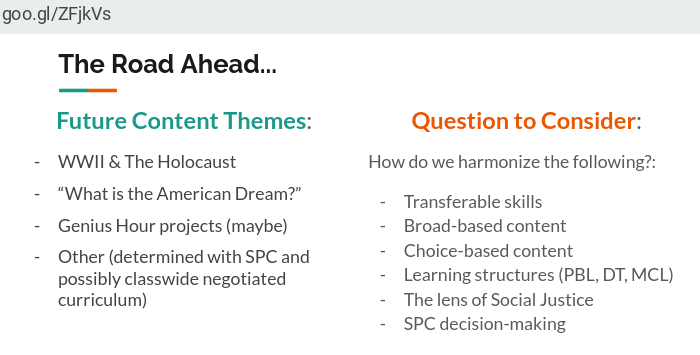
One final note: as I worked with the student presenters for some final tune-up prepping, they saw this slide and we started talking about where we’re going with our curriculum. It was a brief chat, but meaningful. It was only five students, but they represented an array of ideas, hopes, and means of creating engaging and enriching curriculum. I wrote down as much as I could, knowing that we’d continue the discussion with the rest of the SPC this week.
That quick chat where the students showed such strong agency and ownership of the learning process was a microcosm; one representing not just the power, but the necessity to always have students at the table for curriculum design.
Something that will, indeed, be firmly in place as we continue to move ahead.
